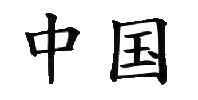China Beat Archive
Date of this Version
10-3-2008
Document Type
Article
Citation
October 3, 2008 in The China Beat http://www.thechinabeat.org/
Abstract
There’s a nice thing about literature about modern Tibet, which is that it is wonderfully polemical. It’s not that I like polemic, which destroys lives and wreaks havoc with societies. But it does make it ever so easy to organize one’s books. So instead of tedious hours sorting them by topic or author, I can arrange my Tibet books according to two or three viewpoints, perhaps four at most. One case for the books with a China POV, some shelves for those from the exile perspective, a few for the “I was a Heroic Western Explorer and Discovered Totally Unknown Tibet/Everest/Himalayas/Central Asia Entirely On My Own Plus 50 Sherpas and a Cook” corpus, and perhaps half a shelf for the Western Buddhist books, though these are surely the most numerous in the field. Then the rest of the space is for the books by the scholars and commentators who are in the middle ground, or at least declare their biases and methods. Wish there were more of those.
This is a totally unprofessional system, which should be called SBP or Shelving By Prejudice, generally speaking theirs rather than mine. I guess it won’t replace the Dewey system for a while. It shouldn’t be possible to do in any well developed field of study, but sadly it’s all too easy in this case. Anyway, the system has great advantages, because if I really get annoyed with a book (like the ones that invent their own transliteration systems for Tibetan – please!), then I can shift it into the category the writer would most dislike and revel in the secret insult. Naughty but nice.
The categories are not divided by ethnicity, of course. Some of the very best of the scholarly “middle ground” books are by Tibetans (like Tsering Shakya, Samten Karmay, Tashi Rabgey and Tseten Wangchuk), and there are myriads of foreigners in the exile category. There are even a few modern-day fellow travelers in the China section. It’s easy to spot the exile-oriented books, because they have forewords by the Dalai Lama, in most of which he demonstrates his signature skill of appearing to say nice things about everyone including the author, while at the same time carefully avoiding saying very much at all (I guess he practices non-judgmental consciousness when it comes to us Western writers). These books use a lot of adjectives, ones that convey intensity and color. The other categories are also pretty straightforward to identify: the scholar-types like abstract nouns without adornment and don’t use a lot of adverbs, the Buddhist books like to have at least two Sanskrit words per paragraph, the China books like numbers, and the explorer books are keen on the “I” word and on photographs of mountains.
Included in
Asian History Commons, Asian Studies Commons, Chinese Studies Commons, International Relations Commons



Comments
Copyright October 3, 2008 Robert J. Barnett. Used by permission.